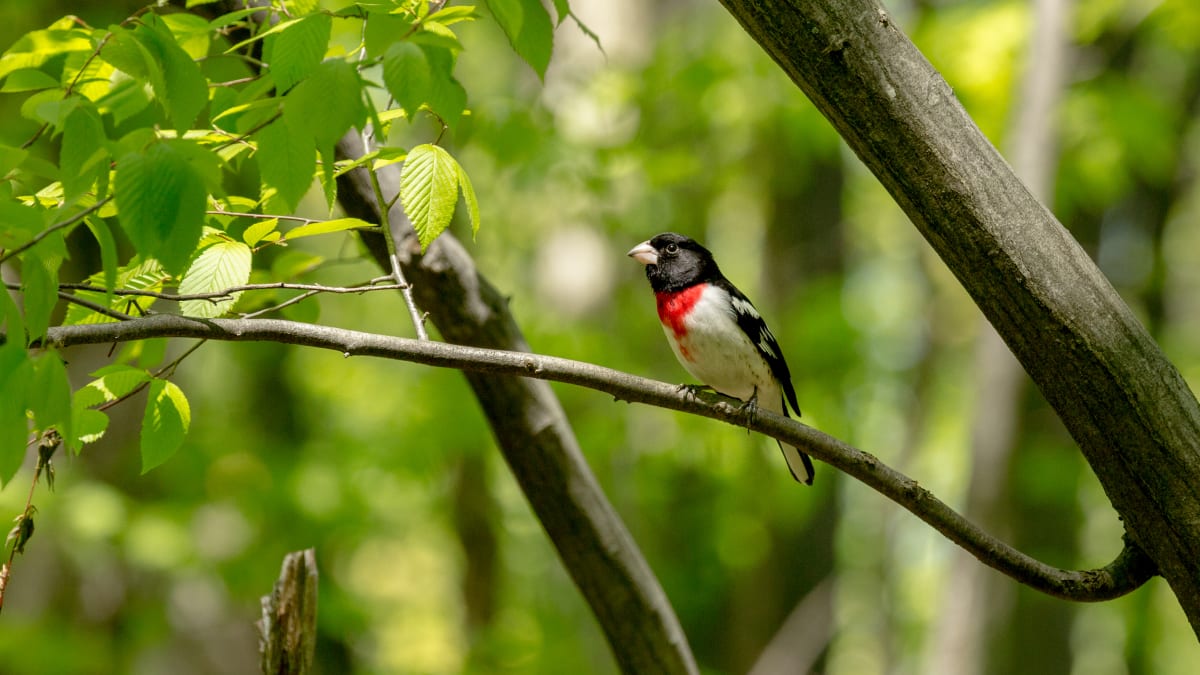Preserving biodiversity: a collective approach
To speed up the green transition, Montréal is determined to infuse and revitalize nature in the city. That’s why it puts biodiversity and green spaces at the heart of its decision-making and encourages green initiatives.
Nature as an ally
The pandemic turned our social and economic lives upside down, but it also had an unforeseen positive side effect on us: an increased desire to get back to nature.
Thanks to prolonged closures of indoor public places, green spaces now have many new uses. Private back yards, gardens, riverbanks and especially our public parks, which are open to all, have rapidly become places to meet friends, unwind or take part in sports.
The public health crisis has made us aware of the importance of green spaces in preserving our health and the quality of urban living, but the biodiversity and unique ecosystems that comprise them cannot be taken for granted: they’re very fragile and sensitive to disturbances. The disappearance of a single habitat or species can disrupt a whole ecosystem and reduce its resilience. Preserving our biodiversity is therefore at the heart of Montréal’s environmental transition, which calls on residents to transform their lifestyles to take care of their environment.
The many benefits of planting trees
There’s no lack of ideas for making Montréal a greener city where coexisting with nature is important. Several projects are underway to make Montréal greener: increasing its green canopy, fighting climate change and reducing urban heat islands.
Planting trees is essential to speed up urban greening. In this respect, Montréal’s on the right track, as some 500,000 trees will be planted by 2030 under the Climate Plan.
The presence of trees benefits us in many ways. Want to profit from the benefits of trees in your yard or neighbourhood? Take part in the A Tree for my Neighbourhood campaign, which can provide you a tree at minimal cost.
Toward a resilient green city
To improve a city’s resilience, it’s crucial to build green infrastructure and to rethink urban development as a function of local needs.
At the neighbourhood level:
- Green alleyways provide a healthy, enjoyable space where families, friends and neighbours can benefit from mutual assistance and ecology.
City-wide:
- The redevelopment of Avenue Papineau, north of highway 40, demonstrates that it is possible to sustainably manage stormwater while encouraging large-scale greening.
- The redesigned parking lot at the Rodrigue-Gilbert arena now includes green spaces that serve to reduce both heat island effects and the stormwater load on the sewer system
Coexisting successfully with ecosystems
When we talk about nature and biodiversity, we also need to think about ecosystems. Each one is unique, contains a multitude of living elements (trees, plants, animals, insects) and depends on a delicate balance to survive. Want a local example of successful coexistence between people and nature? Parc Frédéric-Back is a great example (in French) of finding a balance that preserves ecological integrity and allows public access.
One way to preserve our biodiversity and ecosystems is to create large green spaces. For example, a broad swath of Montréal will become protected under the Grand Parc de l’Ouest project.
Other actions have been and will be taken by the city to protect its ecosystems, particularly with respect to pesticides. In addition to being harmful to human health, pesticides poison pollinators that play a central role in the stability and function of many terrestrial ecosystems.
The importance of urban agriculture
Urban agriculture is a major municipal concern, as it’s a powerful tool to strengthen cities’ resilience. The development of urban beekeeping, the creation of private and community gardens and local compost production contribute to greening the city, enriching urban biodiversity and improving residents’ lifestyles.
How to help protect biodiversity
You can:
- Plant a tree through the A Tree for my Neighbourhood campaign, which makes various kinds of trees available at minimal cost;
- Use alternatives to pesticides;
- Practice urban agriculture at home, in your yard or on your balcony, or in a city-run community garden. Use your imagination!
- Adopt good behaviour in our parks;
- Take part in public consultations;
- Consult the Espace pour la vie website, which suggests simple things you can do to protect biodiversity.
- Visit the Biodôme, the Biosphère, the Jardin botanique, the Insectarium or the Planetarium to learn more about different aspects of biodiversity.
Quick search
Need help?
Contact us if you have questions.
Are you sure you want to leave this page?
This page is not available in English. You will be redirected to the English home page.
